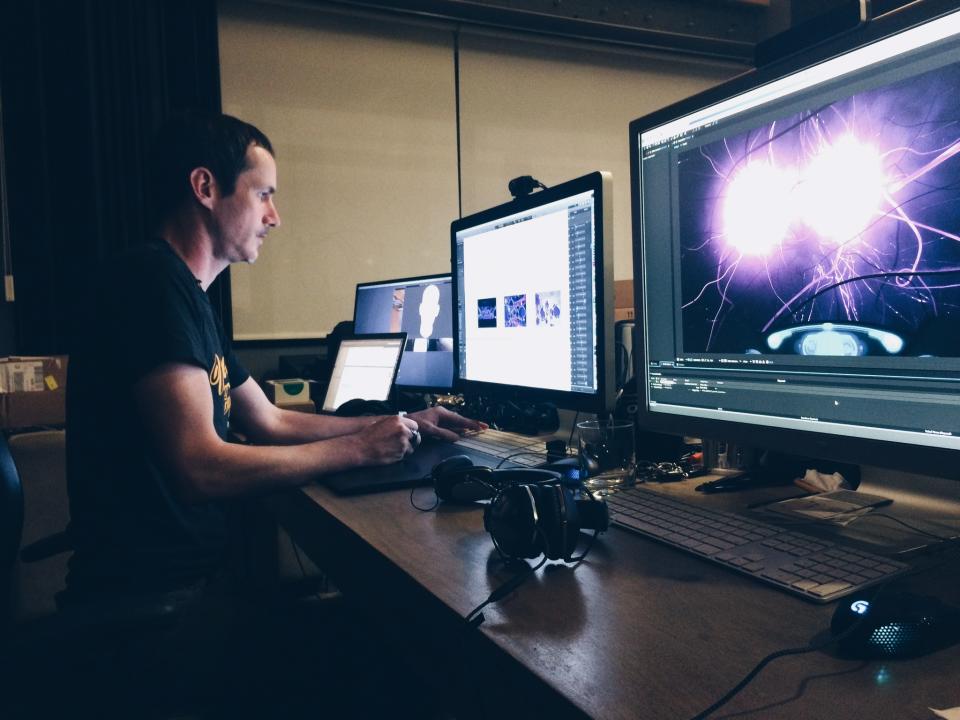GE's Neuro VR experience takes you inside a musician's brain

"Welcome to the complex universe inside Reuben's head." A mysterious voice boomed through the headphones. With an Oculus headset strapped on my face for GE's Neuro VR experience, I found myself moving through British musician Reuben Wu's mind. Bright pink globes and interlinked pipelines flashed before me. What was meant to be anatomical, felt more industrial. It was underwhelming. But soon, the globes made way for a dark abyss and I watched as the neurons inside his brain came to life. They gently sparked and burst into little bolts of neon lightning, replicating the magical, interconnected workings of the complex organ.
There's more to virtual reality than immersive entertainment. A team of neuroscientists at GE have used the technology to traverse the anatomy of the human brain. "[It's] a very interactive and intuitive way of visualizing complex, multi-dimensional neuro imaging data," Sandeep Gupta from GE Global Research told Engadget. "A neurosurgeon could use tools like these to get a complete view of lesions and possible impact of surgery on brain networks and function. The most immediate benefit of the Neuro VR system is perhaps in training for neuroscientists."
Even with all the scientific breakthroughs, the human brain continues to be an exploration-in-progress. "It's estimated that our knowledge [of the brain] is about 50 years behind that of every other organ in our body," says Cory Strassburger, co-founder of Kite & Lightning, the VR content studio that created the experience. But he believes that's going to change. "The beauty is this big mystery inside our brain is just beginning to unfold and I think VR will play an important roll on both the scientific and educational sides."
To ensure that the flashes of neurons matched Wu's brain activity, the team turned to data sets from his MRI. It took about 45 minutes for the imaging technique to map his brain for visual, auditory and motor functions. "Typically, physicians will view MRI brain scan data one layer at a time on a traditional 2D computer monitor, but VR opens up the possibility of seeing into this dimensional data in 3D space," says Strassburger. "It's like the holodeck in Star Trek, you can literally move your head forward and see into Reuben's brain. If you wanted to, you could scale his brain up to the size of a car and walk around inside." The result is a brief yet powerful moment inside a stranger's mind, an experience that will be made available on Oculus Share and Samsung Milk VR.
The final imagery in my voyage through Wu's brain left me in awe. But, every time I recall the neurons that fired up before me, I wonder how this might play out in a practical hospital setting, where the stakes are high. "[It] will come as more clinically proven methods become available for interrogating and assessing the function of the living brain," says Gupta. "The availability of these methods is very limited today." In time, he believes, as neuroscience makes strides, VR and science could collide for a virtual tour of a patient's brain.
[Images: Kite & Lightning]












